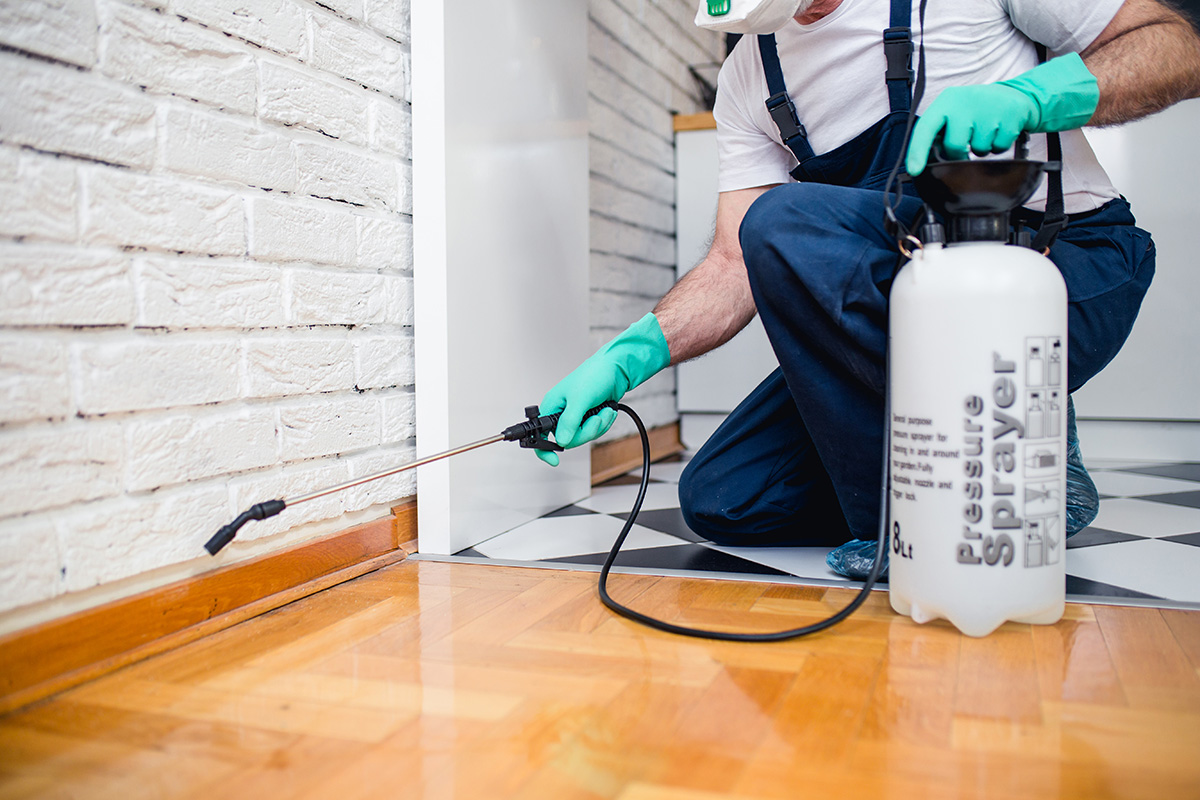A1 Bed Bug Exterminator Charlotte - Specialized Bed Bug Removal
Wiki Article
Bed Insect Therapy Failure: Comparing Chemical Vs. Non-Chemical Solutions
In the realm of pest control, particularly when taking care of the relentless issue of bed bugs, the option in between chemical and non-chemical therapy solutions can be a critical one. Both techniques supply distinct advantages and drawbacks, influencing elements such as efficiency, security factors to consider, and total cost. By checking out the nuanced details of each method, a more clear understanding of which course to go after in attending to a bed pest infestation can be attained.Performance of Chemical Therapies
Chemical treatments for bed insect infestations have actually been extensively identified for their rapid and powerful effectiveness in removing these insects. When thinking about the efficiency of chemical treatments, it is critical to recognize that they can offer a comprehensive and quick solution to a bed pest problem.Additionally, chemical therapies have the advantage of offering residual results, implying that they can proceed to get rid of bed pests also after the initial application. This recurring action is particularly useful in combating any type of prospective re-infestations. Furthermore, the fast activity of chemical treatments can bring relief to people facing extreme bed pest problems, enabling them to regain control of their home swiftly.
Safety And Security Concerns With Chemical Solutions
One vital facet that requires careful consideration when utilizing chemical options for bed bug treatment is guaranteeing the security of residents and the setting. While chemical treatments can be effective in eliminating bed bugs, they might posture dangers if not taken care of properly. Among the main security interest in chemical solutions is the potential injury they can cause to human wellness. Direct exposure to specific chemicals used in bed pest treatments can result in respiratory concerns, skin irritation, or various other negative reactions, especially in individuals with pre-existing conditions or sensitivities. Furthermore, incorrect application or dose of chemical pesticides can cause harmful deposits sticking around in the treated area, presenting long-lasting health and wellness risks to occupants.Moreover, the ecological impact of chemical options is one more significant factor to consider. Some chemicals used in bed bug therapies may be harmful to valuable bugs, wildlife, and ecosystems if they seep right into the soil or water supply. It is essential to utilize chemical therapies sensibly, following safety guidelines, and considering much less hazardous choices to minimize these risks and guarantee the reliable and secure management of bed bug invasions.
Advantages of Non-Chemical Strategies
Considering the potential safety worries and ecological influence linked with chemical solutions for bed insect therapy, exploring non-chemical methods provides an encouraging alternative with several distinctive advantages. Non-chemical approaches provide a more secure alternative for families, especially those with family pets, youngsters, or individuals conscious rough chemicals. These techniques remove the dangers of exposure to harmful compounds, lowering the potential for unfavorable health and wellness effects. Moreover, non-chemical therapies are eco-friendly, as they do not add to air or water air pollution, making them a sustainable choice for parasite control.Additionally, non-chemical solutions can be effective in targeting bed insects, including hard-to-reach areas where chemical treatments may not pass through. Techniques such as heat treatment, vacuuming, heavy steam cleansing, and cushion encasements provide complete eradication without making use of hazardous chemicals. Moreover, non-chemical approaches can be much less turbulent, calling for very little preparation and permitting quicker reentry right into treated locations. In general, opting for non-chemical bed pest therapy methods not just focuses on safety and security and ecological protection yet likewise makes sure reliable and comprehensive insect control.
Limitations of Non-Chemical Treatments

Furthermore, non-chemical treatments often need several applications to attain successful eradication. This can be time-consuming and may not constantly guarantee total elimination of all bed bugs and their eggs, specifically in covert or hard-to-reach places.
Moreover, the success of non-chemical therapies heavily relies upon correct application and thoroughness, which can be testing for individuals without professional expertise. Poor application of non-chemical approaches might cause insufficient eradication, resulting in persistent invasions and the requirement for extra therapies.
Consequently, while non-chemical therapies have their benefits, it is crucial to recognize these limitations and consider them when figuring out one of the most reliable approach for managing bed bug problems.
Price Comparison: Chemical Vs. Non-Chemical Options
Provided the constraints associated with non-chemical therapies, an important aspect to review in the context of bed insect monitoring is the price comparison between chemical and non-chemical options. In comparison, non-chemical therapies like heat treatment or vapor can be extra expensive, with expenses varying from $1,000 to $6,000 for a whole home. While the first expense of chemical therapies might seem lower, several therapies might be needed to completely eradicate the invasion, possibly increasing the overall expense.Conclusion

Considering the prospective safety problems and ecological effect linked with chemical solutions for bed insect treatment, exploring non-chemical approaches offers an encouraging choice with several unique benefits.Given the restrictions linked with pest control materials non-chemical treatments, an important facet to evaluate in the context of bed bug administration is the expense contrast in between chemical and non-chemical choices. In comparison, non-chemical therapies like warm therapy or vapor can be extra expensive, with costs ranging from $1,000 to $6,000 for a whole home. While the first price of chemical therapies may appear reduced, numerous therapies might be needed to totally eliminate the problem, possibly increasing the overall expense.In verdict, when see this website contrasting chemical and non-chemical bed bug treatment choices, it is important to take into consideration performance, security, benefits, restrictions, and price.
Report this wiki page